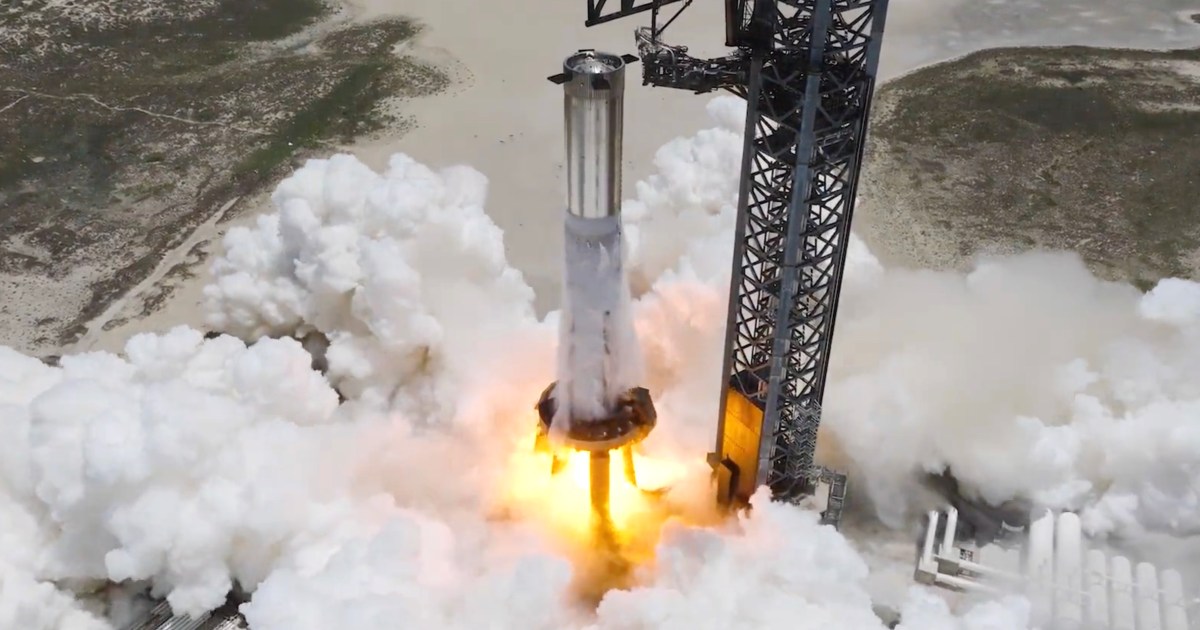
SpaceX has performed a static fire test of its Super Heavy booster ahead of its second test flight.
SpaceX live streamed Sunday’s event, with the footage now available via the video player embedded at the top of this page. The company also tweeted a clip showing the test from a different angle.
The test took place at SpaceX’s Starbase facility in Boca Chica, Texas, and fired up all 33 of the Super Heavy’s Raptor engines.
The Super Heavy creates around 17 million pounds of thrust during an actual launch, making it the most powerful rocket ever built. Its engines did not fire at full power today, but the thrust level still exceeded that of the Falcon Heavy, SpaceX’s next most powerful rocket, which reaches around 5 million pounds of thrust at launch.
One of the purposes of Sunday’s firing was to test the resilience of a new water-cooled flame deflector, a water-deluge system made of steel that’s designed to protect the pad by deflecting the intense heat and force of a Starship launch. The first launch of the Super Heavy in April proved too much for the launchpad, causing it to disintegrate, sending fragments of concrete and other materials over a wide area. Sunday’s test seemed to go well, with the launchpad remaining largely intact. However, it was confirmed that four of the Raptor engines shut down prematurely.
The launch vehicle, which comprises the first-stage Super Heavy and upper-stage Starship spacecraft (collectively known as the Starship), failed to reach orbit on its maiden flight, with an anomaly prompting controllers to blow up the rocket in midair a few minutes after launch. Tweeting on Saturday, SpaceX CEO Elon Musk said there was a “~50% probability of reaching orbital velocity” for the upcoming second test flight, adding that “even getting to stage separation would be a win.”
No date has been set for the Super Heavy’s second flight, with regulators still assessing the effects of the first flight before giving the nod.
When fully tested, SpaceX wants to use the Starship to send cargo and crew to the moon, Mars, and possibly beyond. A modified version of the Starship spacecraft will be used to land two NASA astronauts on the lunar surface as part of the Artemis III mission, which is currently set for 2025.
Editors’ Recommendations
Services Marketplace – Listings, Bookings & Reviews
